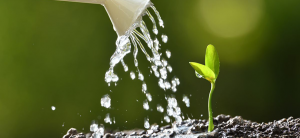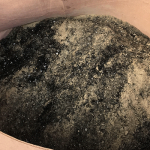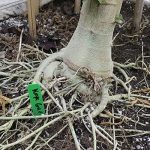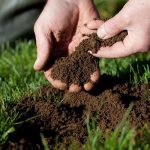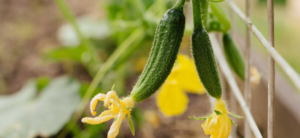
While it sounds so simple, there are certain things you need to know about how to properly water plants.
Your watering schedule needs to be dialed in for great yields.
Two of the most common mistakes new growers make are over watering and under watering. These issues can not only prevent you from achieving your desired yield. They can honestly ruin your grow.
We're going to teach you best practices for providing your plants the perfect amount of water, every time.
We want to explain the problems that can arise when you water too much or too little. This will help you understand the gravity of this task.
What can happen when you under water or over water?
Watering your plants without thought can lead to serious issues in your garden or grow room.
Over watering is more common since new growers tend to over guess how much water their plants truly need. Over watering can lead to serious root related issues, such as root rot.
It also can aid all kinds of fungus and mold-related problems. When you water your plants too much your soil doesn't have a chance to dry out. This creates the perfect conditions for issues to come up.
If you are growing indoors, all that extra water goes up into the environment, creating humidity issues. This can lead to mold/mildew overtaking any area of the plant.
On the other hand, under-watering can lead to issues. If you don't water your plants enough, they will be more prone to heat stress. This could lead to stagnant growth.
Signs of under watering and over watering
You'll be able to tell quickly if your plants are under watered or over watered.
If your plants are looking droopy or lifeless and the media is dry, it is likely an under watering issue.
You can also look for yellowing or browning leaves, as this indicates the plant may be drying out.
The symptoms of over watering are actually very similar to under watering, which can make the diagnosis very difficult.
To tell the difference between under/over watering, look for dark green leaves and curling/clawing of the leaves. This is a sign of over watering.
So, the bottom line is you need to water just the right amount to sustain healthy plants.
Let's cover everything that goes into how much water your plants need.
Factors affecting how frequently and heavily you should water plants
There are a few things that go into determining the right amount of water for your plants. These include growth period/size, grow media, and environmental factors.
Growth period and size of your plants
It should be clear that the age of your plant plays a direct role in how much you should water it. You will start out watering very lightly, and likely not often.
But as your plant grows, you'll need to increase the amount you water as well.
Drainage of your media
There are other important factors that go into how often and much you need to water your plants. The media you are using factors in as well.
Some drain much faster than others, and will need to be watered more frequently. An ideal media drains relatively quickly, as you don't want your roots waterlogged for long. They need oxygen too.
This is why you need to use garden pots that have drainage holes in the bottom.
Better yet, use fabric pots or air pots. These allow your roots to get oxygen through the sides of the pots, and lead to more quick drainage. It is much more difficult to over water if you use the best garden pots.
If you want to take it a step further, you can add media that helps rapid draining like perlite.
Perlite adds aeration and drainage of media, and can be mixed into just about any media. There are special mixes of soil or coco that have perlite and other amendments added in, to further aid drainage.
Some of the best media to prevent over watering are:
- Mother Earth Coco + Perlite Soilless Mix
- Botanicare ReadyGro Aeration Formula
- Mother Earth Groundswell Performance Potting Soil
Environmental Conditions
The third and final factor affecting your watering needs is the condition of your grow room or outdoor garden. Namely, how hot it is and how much direct light your plants will get.
If you are growing outdoors in the middle of summer, your plants are going to be really hot. They will need to be watered heavier and more often.
If you are growing plants indoors in a mild climate you won't be battling heat and humidity as much. So you won't have to water as much.
How to properly water plants: best practices
No matter what your conditions are, we have some rules of thumb on how to properly water plants. These are just tips, as your own grow will likely differ from the next grower.
As a grower, your job is to monitor your efforts, watch for issues, and adjust as needed. Not every grow will be the same.
Watering guidelines based on pot size
There are a few ways to know how much water your plants will need. One way is based on the size of the container they are growing in.
We recommend watering with a full drench everytime. This means you thoroughly soak the media, allowing you to go more days in between without watering. This is generally better to water in lower quantities, more often.
As a rule of thumb, your plants will need a half gallon of water for every gallon of pot. If you are growing in a 5 gallon pot, a full drench would require about 2.5 gallons of water.
Use your finger to Check Moisture Level To See If The Soil Is Dry
The best way to tell whether or not you need to water your plants is by checking the conditions of your media.
Stick your finger into the media about an inch deep. This is usually around the first knuckle. If you feel the soil is moist, you don't need to water just yet.
This is easily the best way to check whether you need to water or not. That’s because you can assess the moisture content accurately.
Always pH your water before applying to the soil
If you don’t know about how pH affects nutrient uptake and availability you should read our complete.
The bottom line is that even if you aren't feeding nutrients, you need to ensure pH is in the ideal range. Otherwise all kinds of issues can develop. The ideal pH range is between 5.8-6.8 for soil grown plants.
Checking pH is super quick and easy and shouldn't be overlooked. When using a high quality pH pen it takes just a few seconds to test. It takes just a few more to adjust the pH as needed.If you want to learn more about testing pH, PPM, and other important metrics, check out our full guide.
Runoff from watering your plants
Another important part of watering your plants is the runoff. When your plants grow, they produce salts as a waste product. Salts left in the container can choke the roots.
Watering plants has two basic purposes. The first one is to keep your plants from becoming thirsty. The second is to flush the soil of excess salts and nutrients.
When you water make sure that a small amount of water drains into your tray or saucer. This is a good way to tell that you have good drainage.
But, you need a way of removing this runoff efficiently. You can't leave your plants in a saucer with standing water. This creates a breeding ground for mold, mildew, and other bad things.
A common way to handle runoff is to use something to suck up the runoff and empty it.
Another way is to have another tray for watering/feeding plants. You can then replace plants to their normal home after the runoff has been collected.
Use Self Watering Planters & Self Watering Plants
Self-watering planters are great for people who want to keep their plants healthy with an easy watering method. They have a built-in part that sends water to the plants as needed. You don't have to worry about forgetting to water your plants or over watering them. The plant watering system takes care of it by itself.
The beauty of self-watering planters lies in their simplicity. The container sits above the reservoir and holds the soil and the plant. The plants can absorb water from the reservoir whenever they need it. This prevents both under watering and over watering.
Self-watering plants do great in these because the system acts like natural conditions. Plants draw water from the reservoir just like they would from the ground. This allows the roots to access water whenever they require it. That promotes healthy growth.
Bottom watering plants also help prevent issues like waterlogging and root rot. That can occur when too much water sits around the roots. There are a lot of benefits of bottom watering.
Having a self-watering plant watering system not only makes plant care easy but also makes it more reliable. These systems are great for growers who may travel a lot or have a busy schedule.
How does feeding nutrients factor in?
You might be wondering how feeding nutrients factors in. Many feeding schedules have different ways on how frequently you need to feed.
In general it’s a good idea to feed nutrients to every other watering. First give them plain water. Then a few days later when the media has dried you can mix in your nutrients to feed.If you want to learn more about feeding your plants, check out our complete guide.
Final thoughts on how to properly water plants
Now that you know how to properly water plants, you have a better chance of preventing under watering and over watering.
The best way to dial in your watering schedule is to keep a detailed grow journal and checklist. Monitor any changes you make and how they affect your plant health and growth.
If you don't yet have all the supplies you need for watering your plants check out our site! We have pH pens, pots, soil, and more. We have the widest selection of products, with the best prices and service online.If you aren't quite sure what you need or you have any growing related questions give us a call. Our expert growers are ready to help. You can call us at 888-815-9763!





